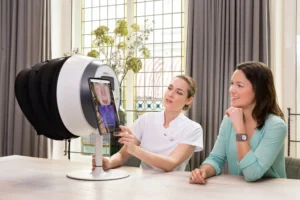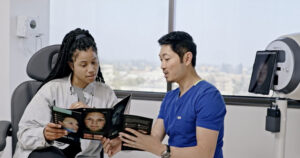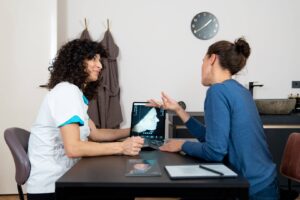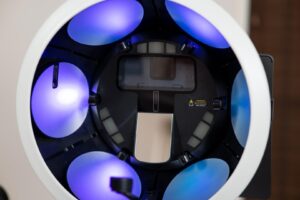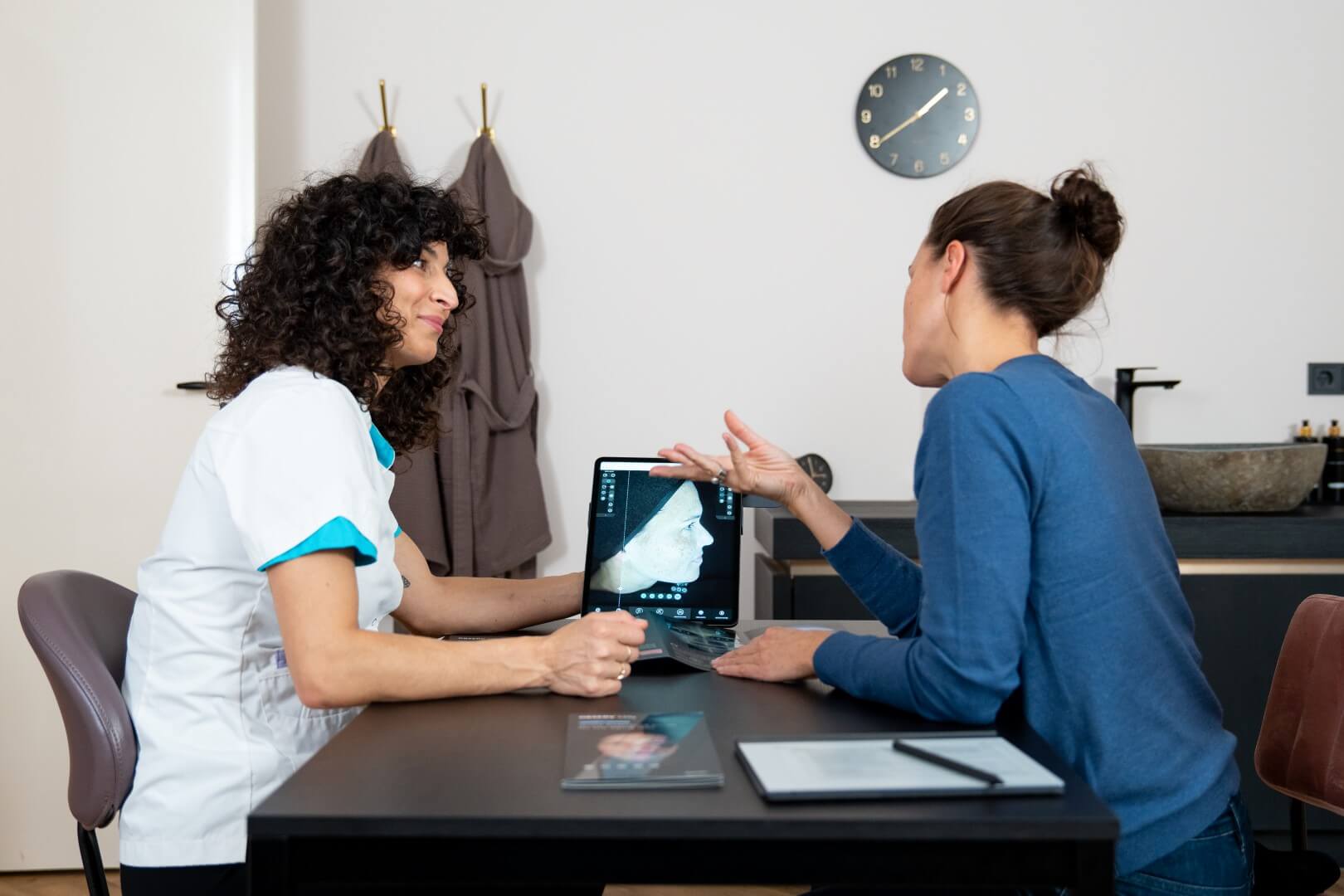
In an era where we have access to everything we could need at the touch of a button, our lives have become intertwined with the online world. We can work from home, purchase one-of-a-kind presents entirely online, and even feel close to long-distance family and friends through video calls. There’s even the possibility of having a whole conversation with emojis rather than words. It seems as if we have online opportunities for it all, including virtual aesthetic consultations. However, when it comes to our skin’s appearance, is a virtual consultation really the best way to help your clients achieve radiant skin?
It’s true: a virtual consultation may seem like the more convenient option when scheduling appointments with clients. In some instances, it may seem like clients prefer the ease of an online consultation as well. With that being said, it’s important to consider the quality of an online appointment versus a face-to-face consultation.
Having a face-to-face consultation allows you to examine your client’s skin up close while learning about their specific aesthetic concerns.
In many cases, an online consultation won’t give you the information you need to address more complex skin appearance issues. For example, clients experiencing certain skin conditions might not have visible signs at the time of the virtual appointment. It could be easy to misinterpret small, red patches as simply an external irritation. However, a face-to-face consultation increases your chances of an accurate and comprehensive assessment, especially when combined with innovative technology during the appointment.
Another benefit of an in-person consultation is the opportunity to build a sustainable relationship with each of your clients. The more frequently you and your clients can meet in person, the more personalized your aesthetic plan can be. Having the ability to see a client’s skin in front of you, rather than from behind a screen, gives you even more of an opportunity to create a unique plan tailored specifically to their skin’s needs. While it is possible to scratch the surface of these conversations in a virtual skin consultation, we find that these conversations are always richer and more fruitful when you can combine your expertise with a face-to-face consultation.
Finally, conducting your consultations in person rather than virtually gives you the ability to use the most advanced skin visualization technologies to provide thorough aesthetic recommendations. There are so many components to one’s skin, including texture, roughness, pigmentation, vascularity, and so much more. These different factors are even difficult to identify using the naked eye, let alone through a screen during a virtual appointment.
Observ technology takes your in-person consultations to the next level by providing quality images that allow you to get an insight into all these different components within the layers of your clients’ skin.
The Observ is able to capture 10 high-definition images within 10 seconds, giving both you and your client pictures focused on each aspect of their skin. Start your client’s journey to radiant skin by capturing these images using either our Observ 320 OR 520x machine. Then, using each picture, conduct an in-depth consultation with your client, showing them each factor of their skin up close. Finally, use your expertise to create a personalized aesthetic plan.
On the journey to the best possible skin appearance, online consultations simply do not measure up to being able to observe your clients’ skin in person, especially when combined with Sylton’s advanced approach. Explore the Sylton approach and learn more about leveling up your face-to-face consultations.



